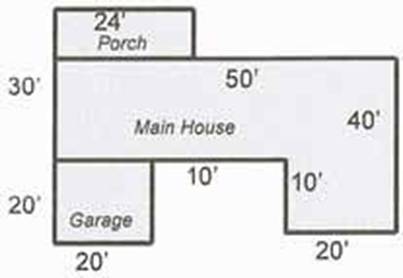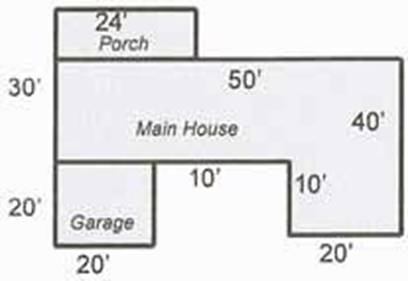Proper Application of Preconstruction Termite Treatments
A Guide for Builders, Pest Management Professionals, and Homeowners
Virginia is geographically located in an area with high termite populations. Termites are destructive when they infest a home or building, often damaging structural components such as walls and floor joists, sill plates and, and flooring. Their movement may be concealed by tunnels and wall voids, and serious structural damage can often occur before a termite infestation is discovered.
Termite prevention is key to avoiding costly structural repairs and replacement costs. Most structures in Virginia are treated against termite infestations during the initial construction process. These preventive termite treatments are commonly referred to as pretreatments or “pretreats.”
A pretreat is intended to create a uniform barrier of termiticide between termites in the soil and the wooden components of the building. To ensure a uniform barrier, termiticide labels prescribe the volume, concentration, and locations for the application of the termiticide. This means relatively large volumes of termiticide solution are needed to adequately treat the soil in and around the foundation walls, support piers, and soil areas to be covered with concrete (slab areas).
It is a violation of state and federal pesticide laws to apply termiticides at concentrations or volumes less than label prescribed rates. Violation of Virginia’s Pesticide Control Act can result in suspension or cancellation of the pest management professional’s (PMP) license and/or a significant civil penalty assessment. Civil penalties are assessed in accordance with Virginia’s Guidelines for Enforcement of the Virginia Pesticide Control Act — Civil Penalty Assessment Decision Matrix. It is important for builders and PMPs to communicate effectively for a proper pretreat to occur.
The cost of termite pretreatments has risen considerably over the last 20 years due to an increase in the price of chemicals, labor, fuel, vehicle maintenance, equipment, office overhead, insurance, and employee salaries and benefits. Treating a 20'x 40' house can cost $300 to $500 in chemical costs alone. Cost can also vary depending on the type of foundation, construction materials, and structural elements.
There are two basic forms of construction with specific pretreat instructions:
Pretreats include structures built adjacent to the foundation, such as porches and patios. Ideally, the builder should notify the PMP before any additions are poured and after final backfill is completed. If additions are not treated before pouring, the slab area should be drilled next to the foundation and treated when the perimeter is treated.
Recommended Treatment for Poured
Slab Construction with Surrounding Block Wall and 1-Foot Interior Fill

A. Treat soil under main slab before concrete is poured.
50'x30' = 1,500 ft2 + 20’x10’= 200 ft2: Total = 1,700 ft2 treated at 1 gallon per 10 ft2 = 170 gallons.
B. Treat soil under garage slab before concrete is poured.
20'x20' = 400 ft2 treated at 1 gallon per 10 ft2 = 40 gallons.
C. Treat inside foundation wall (expansion joint under main slab).
30'+50'+40'+20'+10'+10'+20' = 180 linear feet treated at 4 gallons per 10 linear feet = 72 gallons.
D. Treat soil in the garage expansion joint (three sides, in front, have no block wall and only a garage door).
20'+20'+20' = 60 linear feet treated at 4 gallons per 10 linear feet = 24 gallons.
E. Treat masonry voids (hollow block wall).
30'+50'+40'+20'+10'+10'+20'+20'+20' = 220 linear feet treated at 2 gallons per 10 linear feet = 44 gallons.
Trip 2
Treat soil under expansion joint of rear attached porch slab before additional concrete is poured. 24 feet treated at 4 gallons per 10 linear feet=9.6 gallons (approximately 10 gallons).
Note: This area may also be treated on trip 3, but the attached slab would have to be drilled to allow the chemical to be applied in the proper location.
Trip 3
Treat soil adjacent to the outside foundation. This should be done after all sod and landscaping activities are complete.
20+30+26+40+20+10+10+20 = 176 linear feet treated at 4 gallons per 10 linear feet = 70.4 gallons (approximately 70 gallons).
TOTAL FOR JOB = 350+10+70 = 430 GALLONS
2. CRAWLSPACE AND/OR BASEMENT FOUNDATIONS - A proper termite pretreat of a crawlspace or basement home requires the placement of a continuous chemical barrier on both sides of the foundation (to the top of the footer or to a minimum of 4' depth). The application rate is calculated as 4 gallons per 10 linear feet. If the foundation is made of hollow blocks, an additional 2 gallons per 10 linear feet is added for application inside the hollow blocks. Other structural elements of the building must also receive treatment in the soil surrounding them (support piers, sewer lines, plumbing, and other utilities).
Recommended Treatment of Crawlspace Construction

Trip 1
Treat inside foundation wall and piers.
A. Inside foundation wall 30'+50'+40'+20'+10'+10'+20' =180 linear feet treated at 4 gallons per 10 linear feet = 72 gallons
B. 18 piers treated at about 2 gallons per pier = 36 gallons.
Note: The gallon approximation is derived from treating the inside 16" masonry void at 2 gallons per 10 linear feet and the soil adjacent to the pier (16"+16"+8"+8") at a rate of 4 gallons per 10 linear feet: This equals 1.86 gallons or approximately 2 gallons.
This example is based on the most common practice for treating crawlspace homes. However, it is recommended that only the masonry voids be treated at this point in construction. The soil adjacent to the walls and piers needs to be treated at a later point in construction. This would prevent disturbance of treated soil by workers during construction as well as unnecessary pesticide exposure to workers on site.
Trip 2
Treat garage slab and attached porch.
A. Attached slab - 24 feet of expansion joint treated at 4 gallons per 10 linear feet = 9.6 gallons (approximately 10 gallons).
B. Garage slab - 20'x20' = 400 ft2 treated at 1 gallon per 10 ft2= 40 gallons.
C. Garage expansion joint = 20'+20'+20' = 60 linear feet treated at 4 gallons per 10 linear feet = 24 gallons.
Trip 3
Treat soil adjacent to outside foundation wall after all landscaping activities are complete.
A. 20+30+26+40+20+10+10+20 = 176 linear feet treated at 4 gallons per 10 linear feet = 70.4 gallons (approximately 70 gallons).
TOTAL FOR JOB = 108+74+70 = 252 GALLONS.
PRETREAT CHECKLIST
✓ Make sure the company hired to do the pest control work has a valid business license issued by the Virginia Department of Agriculture and Consumer Services (VDACS).
✓ Make sure the technician performing the pretreatment has a valid pesticide applicator certificate issued by VDACS.
✓ For a pesticide business's compliance history, utilize the VDACS online Civil Penalty Searchable Database.
✓ Be familiar with the terms and conditions of the pretreat contract.
✓ During the construction phase, up to and including final grading, the builder and PMP must maintain timely communications. PMPs need adequate notice in order to ensure proper soil treatments around foundations, walls, piers, under slabs, etc.
✓ Be aware of soil conditions at the job site. Liquid termiticide labels prohibit the application of the product if soils are frozen or saturated.
✓ For further information on termite treatments see the following Virginia Tech Extension publication titled
For more information, please contact the Virginia Department of Agriculture and Consumer Services, Office of Pesticide Services at: 804-786-3798.
Published by permission of, and thanks to, the Maryland Departmentof Agriculture, Pesticide Regulation Section.
The information above is also available in a brochure by the same title which can be downloaded here.
Related Resources:
For Builders: Pre-Construction Termite Treatments